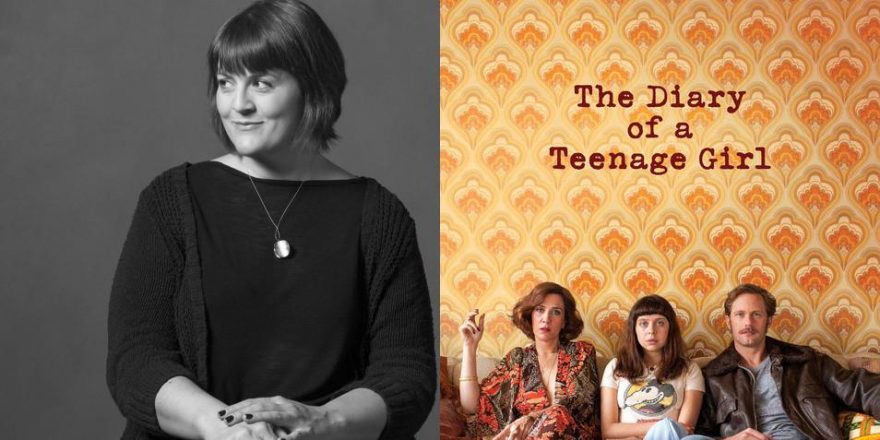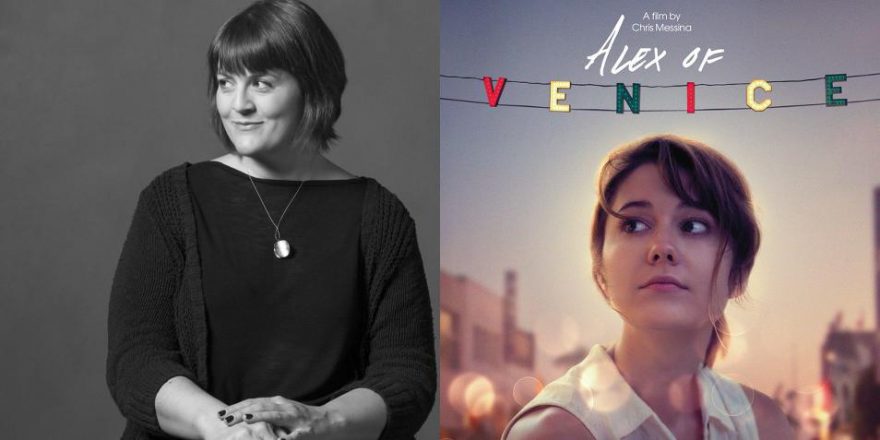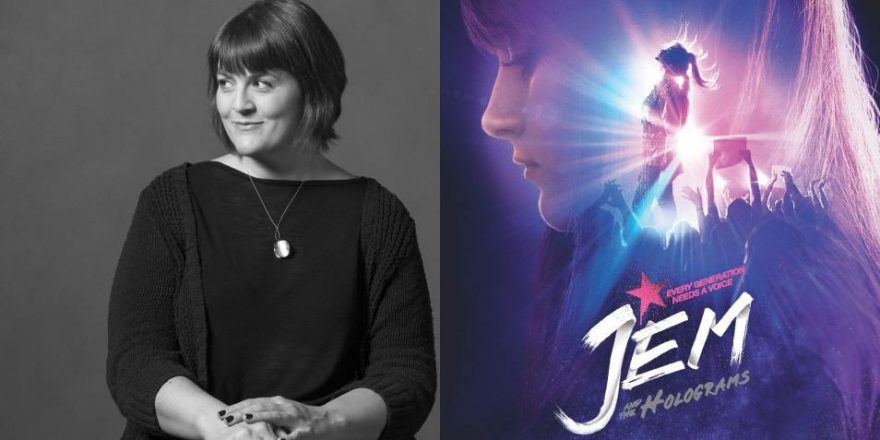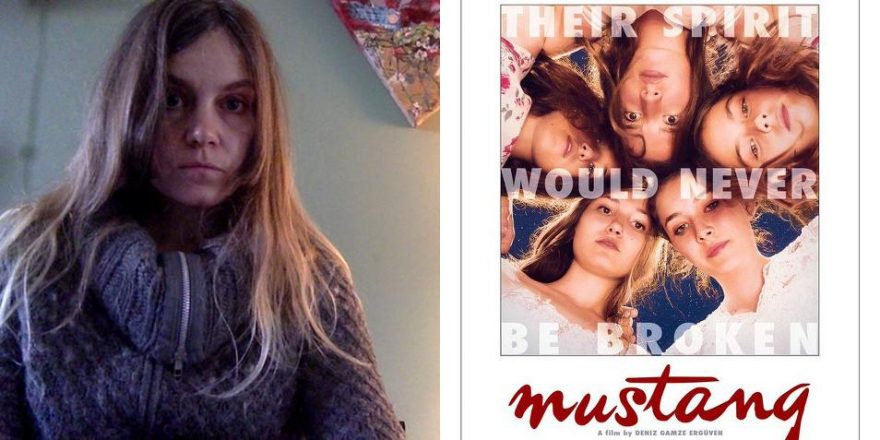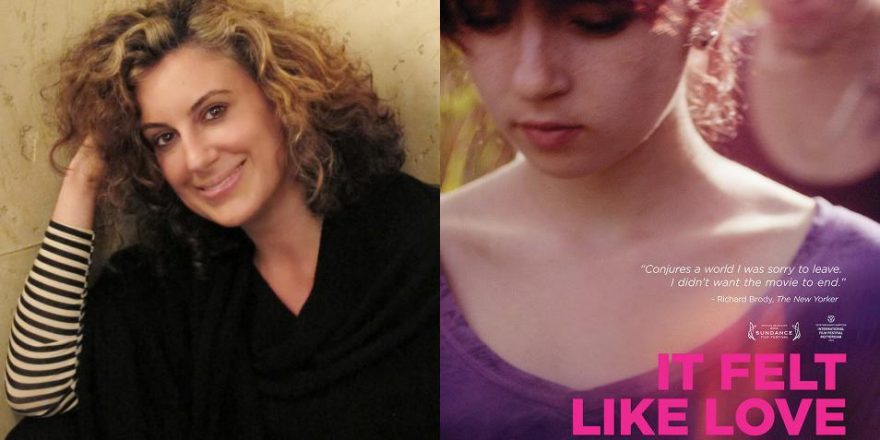Over the first half of January, Talkhouse Film is running the “What We Missed” series, comprising pieces on notable movies from 2015 which were not previously covered. — N.D.
“I want a body pressed up next to me, so that I know that I’m really here.”
The Diary of a Teenage Girl is a film about the simultaneous empowerment/powerlessness, self-love/self-hate and euphoria/despair that accompanies becoming a sexually active human being. In this case, the person who is moving through these conflicting emotions is Minnie (Bel Powley), the bold, bare and brazen heroine of this film. This is not the chaste good girl or the teasing vixen we are used to seeing in films about teenage sexuality. Minnie isn’t grudgingly giving it up to stop the endless pleading of a boy. She isn’t tortured about it. Sex is something she’s curious about, excited about and something she eventually seeks out actively because it feels good. It’s not for someone else, it’s for her. And that is where this movie feels really, really different.
In a society where things tend to play best when they are either black or white, there is a refreshing refusal in this film to minimize complexity or be morally simplistic. Minnie is not always easy to cheer for. She inhabits a very gray area between adult desire and teenage naiveté, societally driven fear and childlike audaciousness, and in this gray area she makes some very scary, stupid choices. One such choice is played out in a scene where Minnie and her best friend are giddy with their newfound sexual power and make it a game to try to get men to buy their services (because, as Minnie says, “Prostitutes have all the fucking power”). The fluorescent-lit bathroom blowjob scene that follows paints a bleak picture, which is offset by the somehow much more intimate act of the two girls holding hands. They forge a path into their unknown future by way of two strange cocks, a grimy tile floor, and the comfort that someone else is sharing this very specific and complicated moment of exhilaration, disgust, dominance and subjugation.
She’s straddling two worlds, one foot in adulthood and one in childhood.The character in this film that seems to make audiences most uncomfortable is the man who takes Minnie’s virginity (if indeed you can “take” something so freely offered). This is someone who might typically be drawn as unambiguously despicable. Monroe (Alexander Skarsgård) is 20 years Minnie’s senior and is the boyfriend of Minnie’s mother (Kristen Wiig). In this film, he’s far from a hero, but he’s not kicking puppies and stroking his pointy mustache either. Monroe is a schlub (albeit a pretty attractive schlub) struggling to get his vitamin business to take off. He is restless, unsettled and obviously thrilled to be in San Francisco at the height of 1970s hedonism so he can actively avoid his very ordinary reality. Neither he nor Minnie nor the film ever really engage in much hand-wringing over the age difference between the characters. That’s not the point. The fact that they have sex is incredibly significant, but not because he’s a predator. Yes, she’s naive (“I know it seems weird, but I had this strangely calming feeling that even if he meant to touch my tit, it’s probably all right because he’s a good guy and he knows how it goes and I don’t.”), and no, of course he shouldn’t be bedding a 15-year-old. But this film isn’t about pedophilia. It’s about one girl’s journey into womanhood, and in this particular scenario, Monroe is just a guy. A guy who happens to show an interest in Minnie when she’s most ready to be interesting to a man.
Minnie’s sexual agency is intimidating. The high-school boy she hooks up with after Monroe is completely weirded out that Minnie wears her desire so plainly. (“You’re just so intense. I mean, there’s just something about having sex with you, Minnie, that kind of scares me.”) Girls at school call her a slut under their breath. Monroe jokes that she’s a “nympho.” The male/female double standard is in full force even in the liberated ’70s, and it only adds to Minnie’s confusion and frustration. Minnie draws a red “X” on herself with her own blood after her first sexual experience — injured but proud of her wound. She flirts with Monroe like an equal, but throws a tantrum like a child when his attention starts to wander. She’s straddling two worlds, one foot in adulthood and one in childhood, and from moment to moment she’s trying to figure out which leg should shift.
Minnie wants to be a comic-book artist. We see her work throughout the film as animated sequences that open a whole other window into Minnie’s self-perception. In her drawings, she’s monstrous, a giantess much bigger than the world she inhabits. It’s simultaneously horrifying and empowering, her basest urges and deepest insecurities somehow morphing into super powers. It feels like something to aspire to, this ability to weaponize these traits that are much more often hidden away and whispered about. And yet for all her bravado, she still wallows in human frailty as we all do. She muses, “What’s the point of living if nobody loves you? Nobody sees you? Nobody touches you?” Words like these, which feel like familiar inner monologue to many, are voiced, examined, and ultimately answered, at least for Minnie.
The Talkhouse asked me to write about The Diary of a Teenage Girl because I listed it as my favorite film of the year on their contributor poll, and I’m grateful because it’s given me a chance to consider why I loved it as much as I did. I initially saw it in the theater with two female friends. We had planned the evening as a double-feature, but as we exited the theater each of us was so deeply impacted by the experience of watching Marielle Heller’s movie that we collectively decided it could not be followed. Watching it again to prepare to write this piece, it landed just as hard. Its refreshing perspective, complexity and authenticity extend from the characters into the organically period sets, props and costumes (Minnie’s sister’s Coke-bottle glasses!), the desaturated, low-contrast cinematography which echoes Polaroid images from the era, the pitch-perfect casting choices. It felt all of a piece, and I felt drawn into Minnie’s world. Her journey left me laughing, cringing, relating and reflecting. These people aren’t perfect — they make bad choices, say wrong things, don’t see the punishments and rewards you might want them to — but they are familiar in their flaws and universal in the self-centeredness of their experience. In the grand scheme of things, the events that drive this film are insignificant, but to these characters they are monumental. Similarly, in the context of your home viewing options this movie is a fun, edgy indie dramedy, but looking at it in the context of its peers (rom-coms, teen sex comedies, coming-of-age films, etc.), it distinguishes itself as an electrifying evolution in the portrayal of the brains, sexual agency and basic validity of the teenage girl.
Minnie had sex, and life will never be the same.


